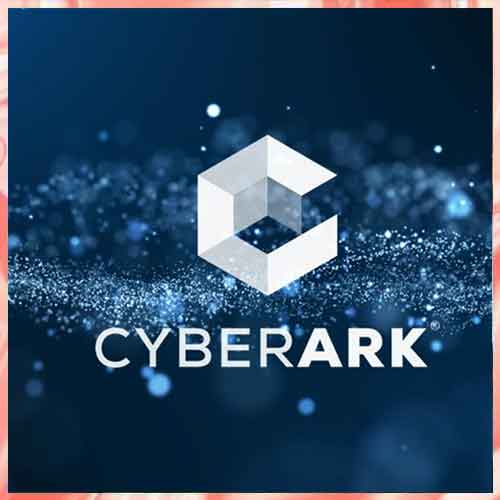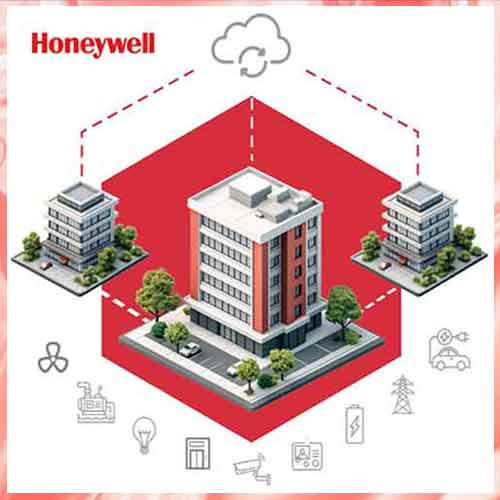x86 Servers Pressing for Strong Growth
2010-04-19
As the demand for technology is growing faster, the user is getting multiple products with various look-and-feel and functionality. Similarly, the server market is also showing the same trend. Today, if one asks for x86 servers, one gets a vista of options starting from hardware configuration to operating software and even the very look and feel. There is an array of products to choose from, i.e. Intel or AMD microprocessor, x86 32-bit or 64-bit, one processor, two processors or multiple processors with dual-core or multi-core or even operating systems whether windows, Linux or others (because Sun Solaris has been optimized for x86). Even form-factor-wise, the products are classified as blade server or rack-mount one.
Ever since the 64-bit computing option has arrived, it appears that the 32-bit is very slowly taking a backseat and it is believed by 2009 it will be a passé. This is because 64-bit processing is capable of making backward integration with all the 32-bit applications.
Another favourable development is that the Indian market for servers isgrowing quite phenomenally with the BFSI, manufacturing, telecom and SMB sectors at the forefront. As per IDC, the market for x86 is precisely 50 per cent of the total server market and is growing at 20 per cent. IDC also says, till Q3 2005 (Jan-Sep) a total of 65,479 units of x86 servers were sold in India. This amounts to a total revenue of US$206.15 million.
According to Gartner, the India server revenue in the third quarter (July to September) of 2005 grew 37.4 per cent compared to the same quarter in 2004. The Asia-Pacific server revenue in the third quarter of 2005 grew 8.3 per cent and unit shipments grew 22 per cent compared to the same quarter in 2004.
The driving force for this growth came mainly from the strong growth in the x86 server spaces. x86 server arguably is the fastest category amongst all the server architectures . More and more large enterprises are adopting the x86 architecture and choosing it as the platform for running Enterprise Applications, e.g., ERP, OLTP, Web Hosting, Database, etc., which till recently had been the forte of non-x86 servers.
The growth figure has aroused the imagination of many non-traditional server vendors. Apart from the established and traditional MNC vendors like HP, IBM, Acer, Dell or Indian players like HCL, Wipro, Zenith, non-traditional players such as LG Electronics and Millennium have entered this business. Even UNIX champion, Sun, has made a pact with AMD to be part of the x86 races with the Opteron platform, though it will be more in the 64-bit segment with Linux software.
Even the microprocessor manufacturers have taken the race to an interesting level. From day one, the competitors like Intel and AMD are very aggressive in the x86 64-bit computing space. Both companies are offering their latest round of chips designed for workhorse servers. Intel has created a Xeon dual processor (DP) with 2 megabytes (MB) of L2 cache, code-named Irwindale, while AMD has released a new Opteron series, including the 852, 452 and 252 chips.
Vendors’ position…
As already stated, it has turned out to be a highly competitive market in India. Vendors like HP and IBM have stood number one or  two or vice versa. Their capability is their reach and services. Apart from this, both the companies play with price and launch aggressive programmes for the channel partnersand customers as well, which is difficult for other vendors to match. Both the companies address the entire spectrum of the market with their offerings. Even IBM has a leasing option for the customers. IBM had launched some of the fantastic programmes like “pay as you grow” or “server at Re.1” etc., to attract profiles of all entrepreneurs.
two or vice versa. Their capability is their reach and services. Apart from this, both the companies play with price and launch aggressive programmes for the channel partnersand customers as well, which is difficult for other vendors to match. Both the companies address the entire spectrum of the market with their offerings. Even IBM has a leasing option for the customers. IBM had launched some of the fantastic programmes like “pay as you grow” or “server at Re.1” etc., to attract profiles of all entrepreneurs.
HP offers a broad server portfolio that covers the complete spectrum of customer demand. HP’s strategy of focussed innovation on the top of standards-based processors from Intel and AMD puts HP in the best position to meet the needs of our customers and capitalize on the indisputable market trends around standardization, virtualization and consolidation. It sells its x86 servers under the ProLiant range with Intel Xeon, Pentium III and Pentium 4 processors. These systems are operated on Windows, NetWare and Linux environments. The ProLiant line has three segments, i.e. ProLiant ML (pedestal), ProLiant DL (density/rack optimized) and ProLiant BL (blade) servers.
The HP’s strategy is aligned with customer’s needs and market trends. It also enables HP to offer a better range of choices than those of their competitors who have chosen different paths and focus on proprietary lock-ins or who lack a full portfolio of enterprise offerings. HP’s adaptive enterprise strategy and HP’s Smart office initiative takes care of the entrepreneurs of all sizes from day one. Smart office initiative provides forward-thinking businesses with innovative, but practical solutions which, in turn, provide a competitive edge and help increase productivity. HP promises the customers benefit from a broad range of scalable, reliable and high-quality solutions, enabling the business to achieve better results from your IT investments today and minimize your risks about tomorrow.
In June 2005, HP achieved another milestone in the computer industry by shipping the company’s 10 millionth industry-standard x86 server. HP, which shipped its first x86 processor-based ProLiant server in 1993, had held the No. 1 ranking for worldwide x86 server shipments for 35 consecutive quarters (when combined with Compaq) – nearly nine years. It had bagged some leading accounts like HDFC Bank, ING Vysya Life Insurance, SIFY Ltd., Hindustan Petroleum and Tata Consultancy.
Mr. Rajesh Dhar, Country Manager, Industry Standard Servers, Technology Solutions Group, HP India, says, “x86 server is a fastest growing product market at present. It is growing at about 30–40 per cent, which is the best in any category of server space now.”
The market trend, as per Mr. Rajesh, is clearly towards the 4 CPU, dual-core or multi-core machines. Because it delivers 200+ transactions per second (TPS) speed, which enables every application – be it banking, telecom or even manufacturing – to run in this machine. So, one really does not need 8-way or 16-way machines. Precisely, that is why HP had to drop 8-way computing machines.
He adds,–“Besides, there are a lot of developments happening from the companies like Intel and AMD. They are bringing out a lot of exciting technology in the dual-core space.”
As per IDC, IBM was the number one in the overall server market in India for the year 2004. From the beginning of Mainframe, IBM’s name is synonymous with servers. Its strategic shift of focus from Mainframe to xSeries during 2003 end has really paid off. IBM is also a major player in Blade Server and a champion of Linux servers. It had garnered a market share of 10.8 per cent in this segment in 2004. SMB is another space where IBM has tightened its grip. IBM sales its x86 series under eServer portfolio, which starts with the xSeries with entry-level Uni-Processor Servers and goes up to 16- and 32-way Processor offerings.’In addition, the company has BladeCenters which can house up to 14 slimline blade servers in a single BladeCenter.
Further, IBM has launched its second-generation BladeCenter, which runs ten times faster compared to the previous version. This blade server upgrade is the key to Big Blue’s attempt to stay ahead in the strategically important and fast-growing market. Blades are clearly a priority for IBM.
Mr. Anil Sethi, Brand Executive – xSeries, ASEAN/SA. IBM, says, “Typically, the Indian server market volume (unit-wise) is skewed towards Uni-Processor and 2-way Processor-based x86 server models. A s such, IBM’s product mix is also akin to the market skew. But IBM being the market leader outdistances our competition in the high-end models (8-way, 16-way, 32-way models) and BladeCenters.”
According to Anil, IBM has been consciously addressing the needs of the various sub-verticals by offering them the right product offerings, solutions and services.
Mr. Anil says, “We also have a strong pool of ISV community who deploy their vertical software solutions (e.g. ERP, EDA, OLTP) on IBM xSeries servers and customize them to support their chosen vertical customers.”
IBM product differentiators are based on four quadrants, i.e. the design is based on the Mainframe Technology, Comprehensive Portfolio of Products, Solutions & Services, Competitive Product Pricings & Value Offerings and Strong and Enabled Pool of Qualified Business Partners.
IBM has had some great wins in the financial services, telecom, manufacturing and industrial sectors. Also, IBM has recently got the servers empanelled in the DGS&D rate contract which will enable the company to take more active participation in the government sector.
Other vendors like Dell sells its x86 servers under the PowerEdge brand. Its Value Towers are the PowerEdge SC products. PowerEdge SC600 uses Celeron or Pentium 4 CPUs. The PowerEdge 1600SC is dual-Xeon processor capable and supports Hyper-threading technology. Dell has almost replicated its success of Desktop PCs on the server, which has helped push Sun to the third spot.
Acer’s servers are used at branch offices, which are for entry-level to lower midrange servers targeted at the SME market. The family  includes Uni-Socket and Dual-Socket x86 Servers. The family starts with Altos G320 – Unisocket Pentium D based Server, G530 – Midrange Dual socket X86 tower server with rack-mountable options, G710–– High-end dual Socket X86 tower server with rack-mountable options, R510–– 1U form factor Dual socket X86 Rack optimised server, R710 – 2U form factor Dual socket dual core X86 Rack optimised server—all powered by Intel processors (Xeon and Pentium 4).
includes Uni-Socket and Dual-Socket x86 Servers. The family starts with Altos G320 – Unisocket Pentium D based Server, G530 – Midrange Dual socket X86 tower server with rack-mountable options, G710–– High-end dual Socket X86 tower server with rack-mountable options, R510–– 1U form factor Dual socket X86 Rack optimised server, R710 – 2U form factor Dual socket dual core X86 Rack optimised server—all powered by Intel processors (Xeon and Pentium 4).
The differentiator, as per Mr. Rajendran, is to adopt the latest technology (first to launch 64-bit Unisocket server, first to launch Dual-core Intel X86 Server are some examples of 2005) and provide the customer the advantage of technology at an affordable price (first to launch a sub-Rs.50K Dual-core server in India). He says, “We have different models to effectively position against the competition models and our USP in terms of product technology and expandability always differentiates us.” The other differentiate, according to Mr. Rajendran, is excellent value adds like free bundles which empower the customer to get the best out of the system.
Acer has a strong presence in BFSI – SBI/Canara Bank/Bank of Maharastra/ Bank of India and Government – projects in Railways/NIC/NICSI/Gujarat Informatics limited.
For 2006, the company has a target of selling 6,000 servers in the BFSI/Government/SMB segments. Secondly, it has strong plans to bolster the channel partners, VARs and resellers to effectively address the verticals, which will ultimately increase the reach and depth.
Sun sells its x86 servers which are based on Solaris and Linux OS and AMD Opteron platform. The value for a Sun customer is that one can look at a much more broad range of solutions. According to some senior officials at Sun, Sun is a product and technology company. Sun is designing a great enterprise management to enable customers to manage their products from anywhere in the world. The company is also about to launch blade servers.
The Indian MNC, HCL Infosystems, sells servers under its Infinity Global Line. Servers are based on building blocks provided by Intel. The family starts with Infinity GL1400BL.
Another Indian player, Zenith Computers, has its limited edition of servers which are Zenith Premium Data Server, Zenith Premium NetServer 1and Zenith Premium NetServer 2. Similarly, PCS has a range of servers which start with SiiRUS Compact UP X., which is an Intel Pentium4 3.0GHz, 1MB, 800FSB : SINGLE CPU server.
The PC essential and CE vendor, LG, has also entered the server business with its Pro Server range, which is targeted at the business solution for messaging and collaboration, secure Internet access, protected data storage and reliable printing for the SMB segment.
See What’s Next in Tech With the Fast Forward Newsletter
Tweets From @varindiamag
Nothing to see here - yet
When they Tweet, their Tweets will show up here.




























